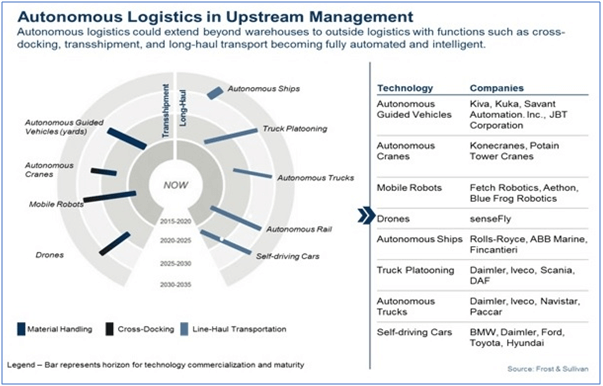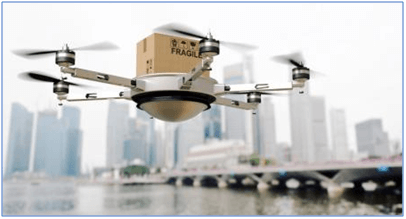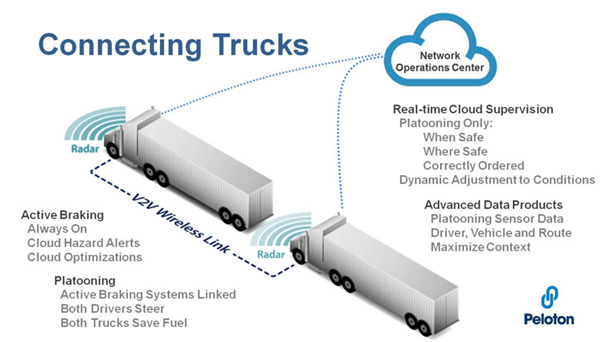Companies of all different kinds are entering the autonomous vehicle market. Due to the potential in which autonomous vehicle can drastically improve situations in the companies, huge amounts of funds have been invested into this area for research.
The hype that self-driving vehicles will have an immense impact on individual consumer travel, but it will also greatly impact logistics and supply chain management as well. How will it impact supply chain as a whole?
Table of Contents
Autonomous Vehicle Technology
There is a real possibility of fleets becoming totally autonomous as well. Truck platooning and autonomous trucks could be a reality by 2030. Rolls Royce has announced plans to launch autonomous cargo by 2030.
While replacing or aiding man was a critical criterion for autonomous technology in material handling, for fleets, the value of autonomy centres around fuel economy. Truck platooning, for example, could mean saving as much as 20 percent on fuel costs.

Two Common Category of Autonomous Vehicle in Supply Chain
In today’s context of autonomous vehicle for supply chain, it is split into two categories which are air and land. From unmanned mobile robots in warehouses to drones for online fulfilment, the current supply chain is undergoing a major transformation.
Autonomous vehicles use varieties of techniques to detect their surroundings, such as radar, laser light, GPS, odometry, and computer vision. Advanced control systems interpret sensory information to identify appropriate navigation paths, as well as obstacles and relevant signage.
1. Autonomous Vehicle (Air)
A drone, in a technological context, is an unmanned aircraft. Drones are more formally known as unmanned aerial vehicles (UAVs) or unmanned aircraft systems (UASs). Essentially, a drone is a flying robot. The aircrafts may be remotely controlled or can fly autonomously through software-controlled flight plans in their embedded systems working in conjunction with on board sensors and GPS. The picture below shows the delivery efficiency with the drone flying over a traffic jam.


2. Autonomous Vehicle (Land)
Ranging from automated guided vehicles to autonomous trucking, autonomous machines must be able to work in environments alongside people, and assist them in their work, without the risk of accidents. They ought to be able to communicate with other facilities in the infrastructure in real time, in order to ensure a smooth workflow.

Final Mile Delivery and Distribution Centre Implications
A challenge to suppliers and distributors alike, the final mile of delivery is typically a bottleneck in the delivery process, as delays frequently occur even with the close proximity of the product to the end consumer. Implementing autonomous vehicle could help reduce costs and delay, it may also be game changer on the amount of distribution and production centres a company needs.
A common practice has been to build distribution centres on cheaper land where highways and human resources were easily accessible. With a shift in consumer requirements that now call for speedier delivery times, these large centres will need to be closer to the end consumer.
Distribution centres will also become smaller, as companies will want to be located close to multiple cities instead of distributing from one central location. It has been estimated that rent costs will increase, which will most likely be offset by reducing costs in implementing autonomous transportation during the final mile of delivery.
Benefits of Autonomous Vehicle in Supply Chain
1. Increase efficiency and productivity
Autonomous robots can reduce labour costs and increase productivity by continuously working around the clock without fatigue. In material transportation environments, robots can seamlessly zip past each other, humans, or other moving objects due to technology capabilities which allows robot to equip themselves with collision avoidance capabilities, ensuring it will be able to react as quickly as any human can react to potential accidental run-ins.
2. Reduce error, rework, and risk rates
Robot setup and implementation is getting faster and easier than ever before. Learning models are becoming more intuitive, allowing any technician or employee to feed information to an autonomous robot in a matter of minutes or hours. Additionally, these learning models allow robots to respond to sudden changes, adapt to stimuli, and improve manufacturing methods based on build results.
3. Improve safety for employees in high-risk work environments
Autonomous robots can test, pick, pack, sort, build, inspect, or transport materials of various sizes and weights faster and more efficiently than ever. Drones are already used to monitor hazardous areas, including control towers, agricultural fields, and mines, and for general security and surveillance.
4. Perform lower value, mundane task so humans can work collaboratively to focus on more strategic efforts that cannot be automated
Via multiple advanced sensors, the truck could detect traffic lanes, immobile objects, and other vehicles Case study: Drones to maintain appropriate driving speeds and distances. With full autonomy, the truck safely maneuvered through the route, demonstrating the potential for drivers to spend long hours on the road focused on other tasks, such as planning routes, organizing documentation, or completing training.
The full content is only visible to SIPMM members
Already a member? Please Login to continue reading.
References
Danielle Furfaro. (2016). “The real reason for New York City’s traffic nightmare”. Retrieved from https://nypost.com/2016/12/02/new-york-citys-traffic-is-intentionally-horrible/, accessed 10/06/2018.
Freddie Holmes. (2015). “‘No quantum leap’ in the move toward driverless trucks”. Retrieved from https://www.automotiveworld.com/analysis/quantum-leap-move-toward-driverless-trucks/, accessed 10/06/2018.
Helmi Salleh. MSIPMM (2017). “The Impact of Emerging Technology and Drone Application on Warehousing”. Retrieved from https://publication.sipmm.edu.sg/impact-emerging-technology-drone-application-warehousing, accessed 10/06/2018.
Joseph Fitzgerald. (2017). “Using autonomous robots to drive supply chain innovation”. Retrieved from https://www2.deloitte.com/us/en/pages/manufacturing/articles/autonomous-robots-supply-chain-innovation.html#, accessed 10/06/2018.
Karter Smith. (2018). “Impact of Autonomous Vehicle in your Supply Chain”. Retrieved from https://www.batonglobal.com/post/impact-of-autonomous-vehicles-in-your-supply-chain, accessed 10/06/2018.
Vijay Narayanan. (2016). “Five Technologies That Will Self-Orchestrate The Supply Chain”. Retrieved from https://ww2.frost.com/news/frost-commentary/future-logistics-five-technologies-will-self-orchestrate-supply-chain/, accessed 10/06/2018.

